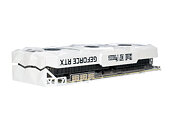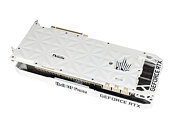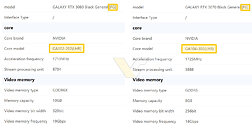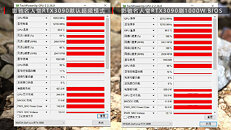
GALAX Blurts Out GeForce RTX 4090 Ti HOF Product Branding
GALAX in its website's front-page carousel, may have inadvertently blurted out the existence of a GeForce RTX 4090 Ti "Ada" SKU in the works. This may well be a typo by the designer of its carousel graphic, but the existence of an RTX 4090 Ti SKU isn't a question of if, but when. We know from our September 2022 article that the RTX 4090 only uses 88% of the streaming multiprocessors (SM) physically present on the 4 nm AD102 silicon (that's 128 out of 144 SM, or 16,384 out of 18,432 CUDA cores), although it maxes out its 384-bit GDDR6X memory bus.
The way NVIDIA carved the RTX 4090 out of the AD102 leaves it with plenty of room to create a faster SKU that maxes out the silicon, backing it with more GPU clock speed, possibly even 23 Gbps-rated GDDR6X memory, resulting in a top-spec flagship with ≥10% higher performance than the RTX 4090, to consolidate NVIDIA's position in the high-end segment—not that it's under much of a threat from AMD right now. The Radeon RX 7900 XTX trades blows with the RTX 4080, and is barely a threat to the RTX 4090. NVIDIA would still want something to sell at $2,000 if not more, and the only way it can do so is by maxing out the AD102 and hope that enthusiasts wanting to climb performance leaderboards would want such a card.
The way NVIDIA carved the RTX 4090 out of the AD102 leaves it with plenty of room to create a faster SKU that maxes out the silicon, backing it with more GPU clock speed, possibly even 23 Gbps-rated GDDR6X memory, resulting in a top-spec flagship with ≥10% higher performance than the RTX 4090, to consolidate NVIDIA's position in the high-end segment—not that it's under much of a threat from AMD right now. The Radeon RX 7900 XTX trades blows with the RTX 4080, and is barely a threat to the RTX 4090. NVIDIA would still want something to sell at $2,000 if not more, and the only way it can do so is by maxing out the AD102 and hope that enthusiasts wanting to climb performance leaderboards would want such a card.











































































